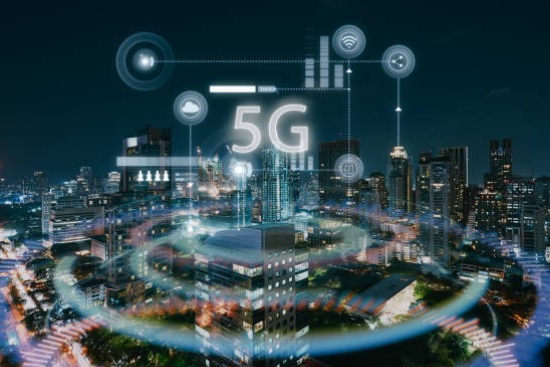
5G’s mobility support for IoT (Internet of Things) devices is an essential aspect of its architecture, designed to ensure that a wide range of connected devices
can move seamlessly across networks without losing connectivity, reliability, or performance. Here’s a focused look at how 5G enhances mobility support for IoT devices:









1. Support for a Wide Range of IoT Devices
Device Diversity: 5G accommodates a broad spectrum of IoT devices, from simple, low-power sensors to complex, high-bandwidth applications like connected vehicles. This range requires robust mobility support tailored to the specific needs of each device type.
Massive Device Connectivity: 5G networks are designed to handle up to 1 million IoT devices per square kilometer, ensuring that even in dense environments, devices remain connected as they move.
2. Optimized Handover Mechanisms
Seamless Handover: 5G supports seamless handover between cells and different network types (e.g., from 4G LTE to 5G NR), ensuring that IoT devices, especially those on the move, maintain uninterrupted connectivity.
Conditional Handover: IoT devices can benefit from pre-configured handover options that trigger based on specific conditions, optimizing the timing and success of transitions between network cells.
3. Low-Power Wide-Area (LPWA) Technologies
Narrowband IoT (NB-IoT): Supports devices that need extended battery life and broad coverage, with a focus on low data rates and infrequent communication. It’s ideal for static or slow-moving devices in challenging environments.
LTE-M: Provides mobility support with higher data rates and low power consumption, making it suitable for wearables, asset tracking, and mobile sensors.
4. Multi-Connectivity and Dual Connectivity
Dual Connectivity: IoT devices can maintain connections to both 4G and 5G networks simultaneously, which is particularly useful for devices that move between areas of varying network coverage.
Carrier Aggregation: Devices can aggregate bandwidth from multiple carriers across different frequencies, enhancing data throughput and reliability, even in motion.
5. Edge Computing Integration
Reduced Latency: By processing data closer to the source, edge computing reduces latency for mobile IoT devices, which is crucial for real-time applications like autonomous vehicles.
Local Data Processing: Ensures that as IoT devices move, their data processing remains local, minimizing delays and maintaining performance.
6. Energy Efficiency in Mobility
Extended Discontinuous Reception (eDRX): Allows IoT devices to sleep for extended periods while remaining available for connectivity, significantly conserving energy without compromising mobility.
Power Saving Mode (PSM): Supports IoT devices in maintaining connectivity with minimal power use, even as they move, extending battery life for mobile and remote applications.
7. Enhanced Security and Privacy
Secure Mobility: 5G enhances security for IoT devices as they move between network segments, with improved encryption, authentication, and privacy measures to protect data and device integrity.
Robust Device Authentication: Ensures that as IoT devices roam, they are continuously authenticated and secure, preventing unauthorized access and data breaches.
8. Network Slicing for IoT Mobility
Dedicated Network Slices: Different slices can be configured to meet the specific mobility needs of various IoT applications, ensuring consistent performance and reliability as devices move.
Dynamic Resource Allocation: Resources within network slices are allocated dynamically, ensuring that moving IoT devices receive the appropriate bandwidth and quality of service.
9. Mobility Support for Specific IoT Use Cases
Connected Vehicles: 5G’s low latency and high reliability are crucial for vehicle-to-everything (V2X) communication, enabling safe and efficient autonomous driving.
Asset Tracking: For logistics and supply chain management, 5G ensures continuous tracking and real-time updates as goods move across regions.
Wearables and Health Monitoring: Mobile health devices benefit from 5G’s consistent connectivity, ensuring real-time data transmission and reliable communication as users move.
10. AI and Predictive Mobility Management
Predictive Analytics: AI algorithms predict device movement, enabling preemptive network adjustments to optimize handovers and connectivity for moving IoT devices.
Dynamic Network Optimization: AI-driven systems continuously monitor and adjust network parameters to support IoT devices’ mobility, ensuring optimal performance and minimal disruption.
Summary
5G’s mobility support for IoT devices is robust and versatile, ensuring that a wide variety of devices can move seamlessly across networks while maintaining connectivity, efficiency, and security. By integrating advanced handover mechanisms, low-power technologies, edge computing, and AI-driven management, 5G enables a new level of mobility for IoT applications, from smart cities and connected vehicles to mobile health monitoring and industrial automation.

Leave a Reply